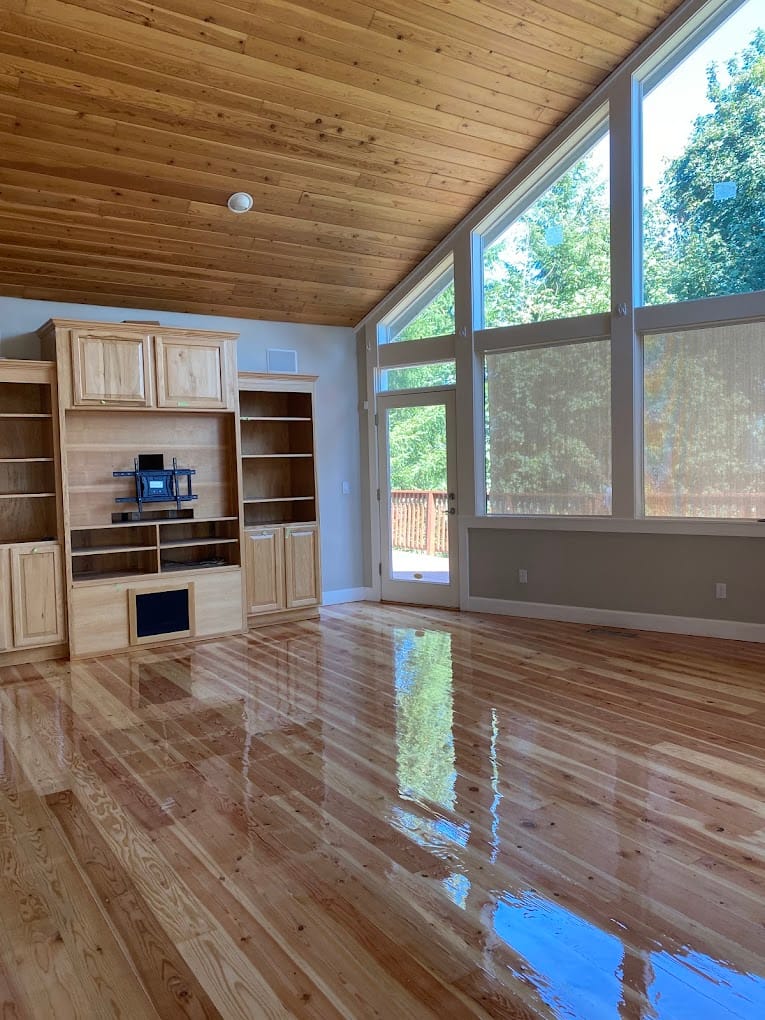Your new flooring is a major investment that can enhance the beauty and value of your home. Whether you’ve installed hardwood, tile, laminate, or vinyl, your floors contribute significantly to the overall aesthetic and functionality of your living space.

However, to keep them looking fresh and extend their lifespan, proper maintenance is crucial from day one. Regular care ensures that your flooring maintains its shine, resists wear, and provides long-lasting durability. This comprehensive guide will walk you through the best practices for maintaining different types of floors after installation, ensuring that you get the most out of your investment.
Hardwood Floor Maintenance After Refinishing
Refinishing your hardwood floors breathes new life into them, restoring their original luster. However, the post-refinishing phase is critical to ensure the longevity of the refinishing job. Here are some essential steps to follow after your hardwood floors are refinished:
Wait 24 Hours Before Walking: Give your hardwood floors a full 24 hours after the final coat to cure before walking on them, even with stocking feet. Walking too soon can damage the fresh finish, leaving marks or causing uneven drying.
72 Hours Before Moving Furniture: Allow three full days before moving furniture back into the space. Even after that period, avoid dragging furniture across the floor, as it could scuff or dent the finish. Consider lifting items or using protective furniture sliders.
Five Days Before Pets Can Walk on the Floors: Pets’ claws can be harsh on newly refinished floors. To prevent scratching, wait at least five days before allowing your pets to walk on the floors. Afterward, keep their nails trimmed to reduce the chance of damage.
Avoid Cleaning for Seven Days: Resist the urge to clean your floors during the first week. The finish needs time to fully cure, and using cleaning solutions or even water too early can interfere with this process. After seven days, you can resume regular hardwood floor maintenance.
Three to Four Weeks Before Adding Rugs: Rugs can trap moisture and restrict airflow, which may impede the curing process of your floor’s finish. Wait at least three to four weeks before placing area rugs back on the hardwood.
Furniture Protection: Always install felt or soft pads on the feet of your furniture to prevent scratches and dents on the wood. Never drag furniture across the floor, as it can gouge or scrape the surface.
Avoid Plastic Covers: While it may seem protective, using plastic to cover your floors can trap moisture, potentially damaging the finish and the wood underneath. It could also void your warranty, so avoid this common mistake.
Use Window Treatments to Block UV Rays: Prolonged exposure to sunlight can fade and discolor hardwood over time. Installing shades or curtains can help protect your floors from UV damage, especially in rooms with large windows or skylights.
Daily and Routine Maintenance Tips
The longevity and beauty of your hardwood floors depend on routine care. While hardwood floors are relatively low maintenance compared to other surfaces, certain habits can prolong their lifespan and keep them looking their best.
Daily Sweeping or Dust Mopping: Dust and debris can accumulate quickly and act like sandpaper, scratching the surface of your floors. A quick daily sweep or dust mop will remove particles that can damage the finish. Avoid using treated dust mops, as they can make your floors slippery or dull the finish.
Regular Vacuuming: Just as you would vacuum carpets, hardwood floors benefit from regular vacuuming to remove dirt and dust from cracks and crevices. Use a vacuum cleaner with a hardwood floor attachment to avoid scratches.
Spot Cleaning with Damp Cloth: For spills or light stains, a lightly dampened cloth is sufficient. Avoid soaking the cloth and wringing out excess water before use. You can use a recommended hardwood floor cleaner to address tougher stains or sticky spots.
No Damp Mopping: Hardwood and water don’t mix well. Using too much water can cause the wood to warp or damage the finish. When mopping is necessary, use a damp, not wet, mop. Always follow up with a dry cloth to remove any excess moisture.
Invest in a Floor Care Kit: Many installers or flooring retailers offer specific “floor care kits” that contain cleaning solutions and tools designed for hardwood floors. These kits are often more effective than homemade remedies, such as vinegar and water, which may be too harsh or not suitable for all types of finishes.
Dealing with Stains: Light stains can usually be handled by rubbing the area gently with a damp cloth. Avoid abrasive scrubbers or harsh chemicals, which can damage the floor’s surface.
Avoid Excessive Water: When cleaning or dealing with spills, never leave standing water on the floor. Excess water can seep into the wood, causing it to swell, warp, or rot. Wipe up spills immediately with a dry cloth.
Control Humidity: Wood is sensitive to humidity levels, and maintaining a consistent indoor climate can help preserve your floors. Use a humidifier in dry seasons to prevent the wood from shrinking and a dehumidifier in humid seasons to avoid swelling. Ideally, the humidity level in your home should stay between 30-50%.
Periodic Recoating: Over time, even well-maintained floors will show signs of wear. Having your hardwood floors recoated every few years can help keep them looking fresh and provide an added layer of protection.
Avoid Frequent Water-Based Cleaning: While it may seem like regular cleaning is beneficial, water-based cleaning solutions should be used sparingly. Wood floors should only be cleaned when necessary, and only the soiled areas should be targeted to avoid over-saturating the wood.
Use a Floor Protector for Heavy Appliances: When moving heavy appliances like refrigerators, use a floor protector or piece of plywood to avoid scratching or denting your floor. Sliding appliances without protection can cause significant damage to the surface.
Rug Pads and Floor Protection: Use rug pads under area rugs to prevent them from slipping and to add an extra layer of protection. Be sure the rug pads are made for hardwood floors, as some materials can cause discoloration or leave residue on the wood.
By following these tips and adopting a regular maintenance routine, you can protect your investment and enjoy beautiful, long-lasting hardwood floors. For specific recommendations, always consult your flooring manufacturer or installer, as different finishes and wood types may have unique care requirements.
Pavel – Business Owner (POPOVICI CONSTRUCTION LLC)
gethardwoodfloors.com

